- News
- Reviews
- Bikes
- Accessories
- Accessories - misc
- Computer mounts
- Bags
- Bar ends
- Bike bags & cases
- Bottle cages
- Bottles
- Cameras
- Car racks
- Child seats
- Computers
- Glasses
- GPS units
- Helmets
- Lights - front
- Lights - rear
- Lights - sets
- Locks
- Mirrors
- Mudguards
- Racks
- Pumps & CO2 inflators
- Puncture kits
- Reflectives
- Smart watches
- Stands and racks
- Trailers
- Clothing
- Components
- Bar tape & grips
- Bottom brackets
- Brake & gear cables
- Brake & STI levers
- Brake pads & spares
- Brakes
- Cassettes & freewheels
- Chains
- Chainsets & chainrings
- Derailleurs - front
- Derailleurs - rear
- Forks
- Gear levers & shifters
- Groupsets
- Handlebars & extensions
- Headsets
- Hubs
- Inner tubes
- Pedals
- Quick releases & skewers
- Saddles
- Seatposts
- Stems
- Wheels
- Tyres
- Health, fitness and nutrition
- Tools and workshop
- Miscellaneous
- Buyers Guides
- Features
- Forum
- Recommends
- Podcast
TECH NEWS
 Bontrager XXX WaveCel helmet - front close up.jpg
Bontrager XXX WaveCel helmet - front close up.jpgKoroyd sceptical of Bontrager's WaveCel helmet claims
Koroyd, the brand behind the co-polymer tube structure you see in helmets from Smith and Endura, has voiced scepticism at the safety claims Bontrager has made about its new WaveCel technology.
It's not surprising for one brand to question a rival's technology, of course, although this follows on from MIPS having already expressed similar doubts.
Bontrager, Trek's in-house brand, claimed last week that its new WaveCel technology sets new standards in helmet safety, decreasing acceleration from linear/vertical impacts and reducing the rotational forces on the brain caused by oblique/angled impacts.
"On impact, the layers of the WaveCel material move independently and flex until the cell walls crumple and then glide, actively absorbing direct and rotational energy and redirecting it away from your head," said Bontrager.
Bontrager claims that WaveCel is "proven to be up to 48 times more effective than standard EPS (expanded polystyrene) foam at preventing concussions from common cycling accidents".
Check out Bontrager's new WaveCel helmets here
MIPS, which supplies helmet manufacturers with technology designed to lessen the rotational motion that causes certain brain injuries, said that its preliminary test results do not substantiate the safety claims made by Bontrager.
Find out all you need to know about MIPS 
Now Koroyd (the name refers to both the company and the material) has entered the debate. The Koroyd material comprises thousands of co-polymer extruded tubes that are thermally welded together. It is used by several helmet brands rather than EPS. Although it looks vaguely similar, the structure of WaveCel is very different. It's a collapsible cellular material that, as the name suggest, is arranged in a wave pattern.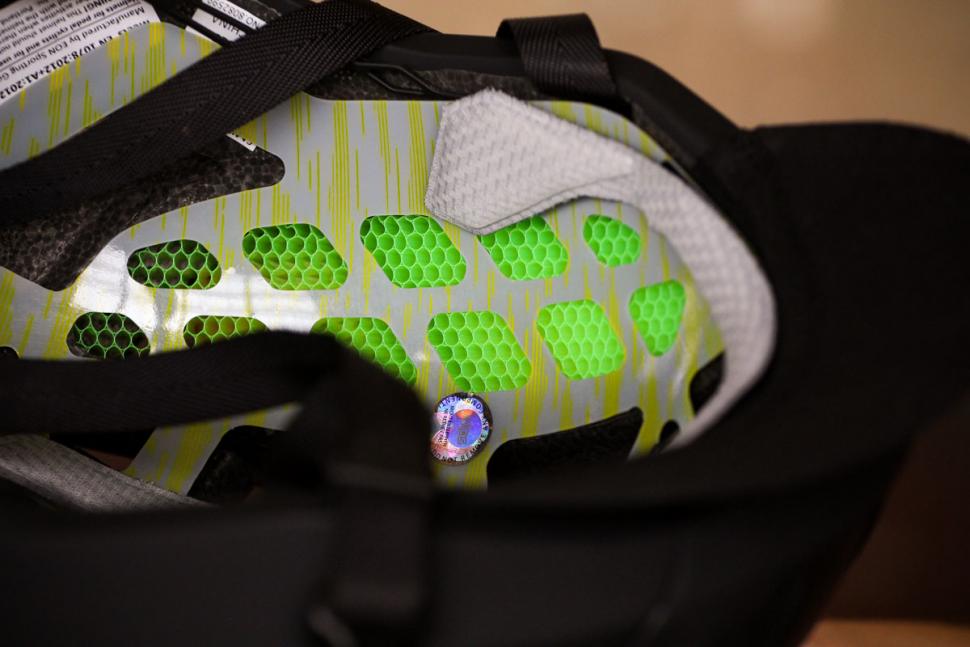
"To effectively manage linear and rotational forces the helmet must be designed as a complete system," says Koroyd. "The former requires compression of materials (and in Koroyd’s case a unique ‘crumple zone’ approach), whereas the latter requires a system capable of fluid movement to redirect the energy. This is why established systems which claim to reduce rotational forces typically operate independently of the core liner."
Although Koroyd doesn't say so, it has MIPS in mind here. Smith's Network helmet, for example, features both Koroyd and MIPS.
Read our Smith Network helmet review
"Our belief is that any system designed to reduce rotational energy should complement the helmet’s ability to absorb linear energy, not compromise it by design," says Koroyd. "We remain wary of a technology that potentially shifts the pendulum of the debate way too far in the opposite direction from established industry standards, favouring a focus on reducing rotational acceleration at the potential detriment of linear impact performance.
"Helmets have to offer holistic protection against linear and rotational acceleration. We are currently evaluating the Bontrager helmets under the same published test protocols that the rest of the market are working to. Despite the fact that we strongly believe the existing helmet standards allow helmets to be certified to a level which represents too high a risk of injury, we also believe that it is important to offer consumers accurate information based around industry-wide, standardised test protocols."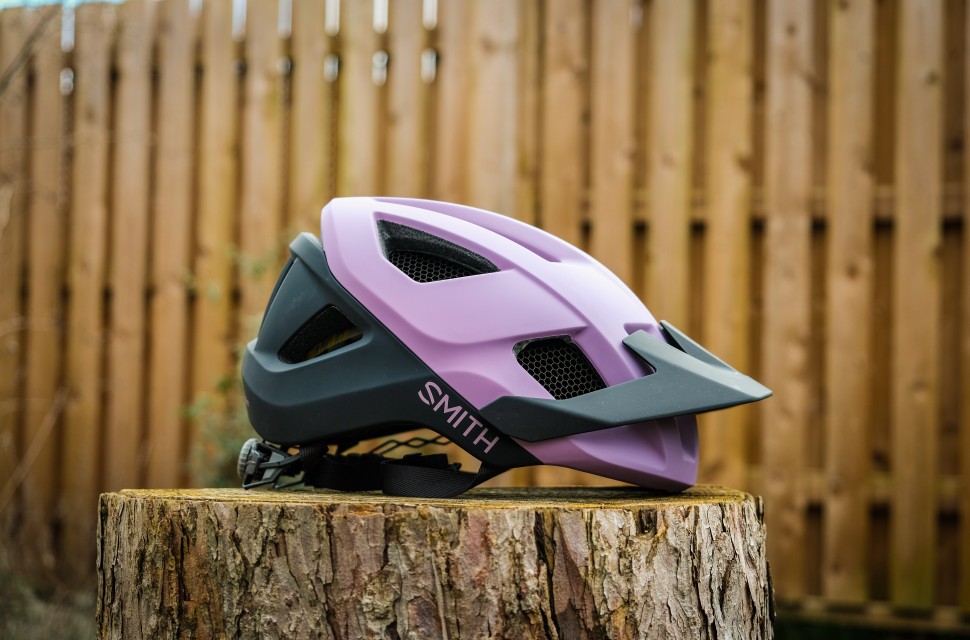
Current safety standard testing does not consider rotational impacts.
Koroyd acknowledges the danger of rotational impacts and says that the risk of injury in this way is substantially reduced as a by-product of reducing linear acceleration.
"Your brain is suspended within a bath of cervical-spinal fluid, surrounded by a protective membrane called the dura," says Koroyd. "When your head hits something hard, your skull decelerates and stops but your brain continues to move, colliding with the inside of the skull. In this collision, your brain can sustain any number of injuries, from bleeding in the brain, to shearing of the tissue, or bleeding between the brain and the dura, or between the dura and the skull. The type and severity of injury is determined by all acceleration to the brain."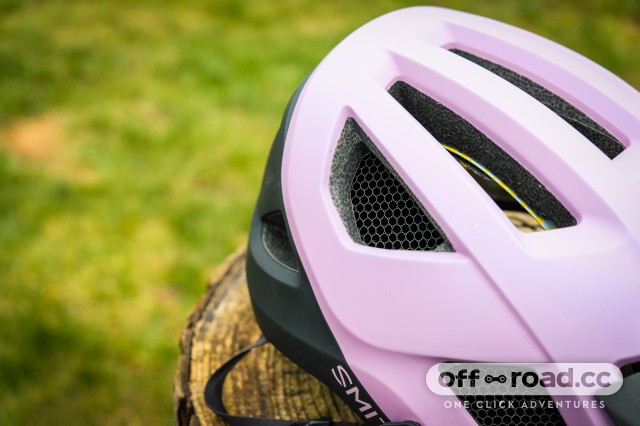
Naturally, Koroyd is keen to champion its own technology.
"Linear acceleration is a parameter which features prominently within all current international standards, and is an area within which Koroyd equipped helmets dramatically outperform the legal limits. This is as a result of Koroyd’s self-imposed Helmet Safety Initiative under which Koroyd equipped helmets have to voluntarily meet much lower limits compared to those mandated in the standards."
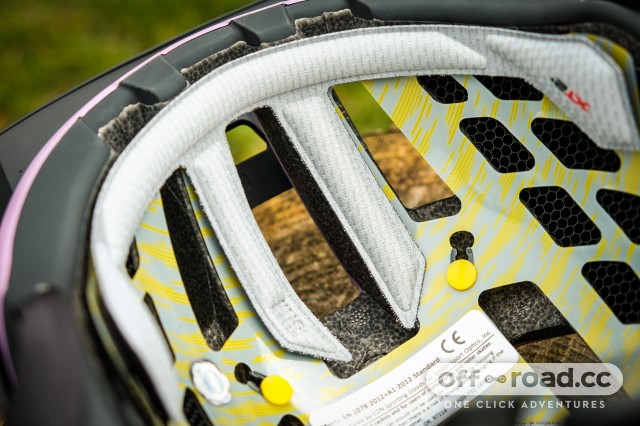
In short, Koroyd is saying that its product excels in reducing linear acceleration and that this also reduces angular acceleration.
"We are looking forward to seeing more scientific led research and solutions as well as acceptance across the board as to what better performing helmets are and then to ultimately see that implemented in future standards, says Koroyd.
"There is currently too much marketing led communication which is not built on accepted knowledge. We all have a duty to present factually to those enjoying our products, whatever their activity."
Mat has been in cycling media since 1996, on titles including BikeRadar, Total Bike, Total Mountain Bike, What Mountain Bike and Mountain Biking UK, and he has been editor of 220 Triathlon and Cycling Plus. Mat has been road.cc technical editor for over a decade, testing bikes, fettling the latest kit, and trying out the most up-to-the-minute clothing. We send him off around the world to get all the news from launches and shows too. He has won his category in Ironman UK 70.3 and finished on the podium in both marathons he has run. Mat is a Cambridge graduate who did a post-grad in magazine journalism, and he is a winner of the Cycling Media Award for Specialist Online Writer. Now over 50, he's riding road and gravel bikes most days for fun and fitness rather than training for competitions.
Latest Comments
- chrisonabike 1 sec ago
Maybe Simoninspalding can reassure them - being in a Holland is OK....
- brooksby 32 min 37 sec ago
Drivers are getting their knickers in a twist over the width of this new cycle path...
- Steve K 34 min 47 sec ago
Yeah, I'll give you that ...
- BIRMINGHAMisaDUMP 42 min 45 sec ago
About 20 years ago I was delivering a work shop in a school in Islington (for those who fall for the media myth that Islington is some kind of...
- BIRMINGHAMisaDUMP 1 hour 5 min ago
They still have all those brexit benefits they can brag about.
- timmyotool 1 hour 55 min ago
The only gilet I'd buy would be the ultra packable type, and I've not seen anything lighter (sub 40g) than the sportful ultralight. That's now...
- marmotte27 3 hours 31 min ago
Don't forget, each of these places is a life hazard.
- VeloUSA 6 hours 7 min ago
It seems what you're searching for is a USB Micro to USB Type-C.
- Owd Big 'Ead 8 hours 9 min ago
Shetland Islanders must be a right bunch of Jessie's these days. The total population of the islands is less than 23,000 and Lerwick where the...
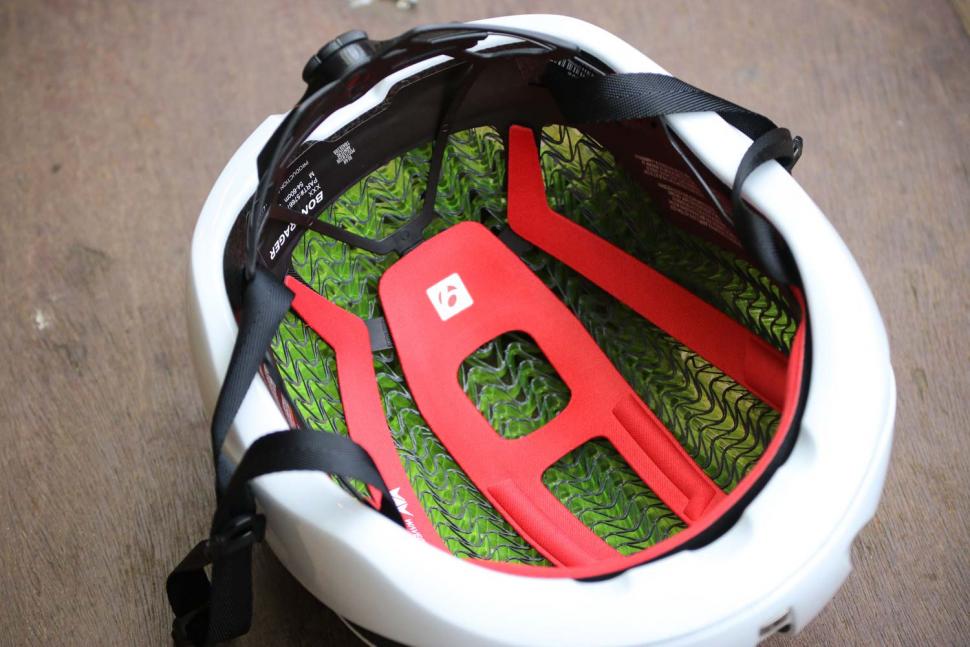

Add new comment
17 comments
Bryin great comments that I agree with being a cyclist, motorcyclist (ex HGV) and car user. I agree one of the best things i learnt was never to blame anyone else. Its a great way to think and drive on the road. It has helped me avoid other people who are dangerous.
The helmet debate started on a motorcycle, I believe driving safer is more important than what type of helmet you have. It could be athousand pound or 10 pound crash helmet but If you hit a object with such force that eitehr lid will fail or you will suffer fatal inuuries then the focus should be on driving safer.
vinnychoff
Last week destroyed my helmet in a crash but saved my head when strong gust of wind blew me in to metal crash barriers. That was unavoidable.
There are people who are not wearing helmets and they shouldn't... it's Darwinism!
P.S. WaveCel safety claims just triggered my BS detector to go off.
Byrin if you have to stick with all your rules life would be dull. Riding with mates is a great laugh and riding at night is often better than daylight. With good lighting you stand out so much better.
I'm not staying on Zwift for the rest of my life. Life is to be lived. Get out and have fun. Even if it rains.
Byrin if you have to stick with all your rules life would be dull. Riding with mates is a great laugh and riding at night is often better than daylight. With good lighting you stand out so much better.
I'm not staying on Zwift for the rest of my life. Life is to be lived. Get out and have fun. Even if it rains.
Byrin if you have to stick with all your rules life would be dull. Riding with mates is a great laugh and riding at night is often better than daylight. With good lighting you stand out so much better.
I'm not staying on Zwift for the rest of my life. Life is to be lived. Get out and have fun. Even if it rains.
Byrin if you have to stick with all your rules life would be dull. Riding with mates is a great laugh and riding at night is often better than daylight. With good lighting you stand out so much better.
I'm not staying on Zwift for the rest of my life. Life is to be lived. Get out and have fun. Even if it rains.
I'm sure Byrin has no problem avoiding riding in a group #billynomates
Made me laugh at the 4 points in the comments from Bryin. The flatearther thinks a cotton cap is as good as a helmet and best just to avoid places where cars would be- to avoid a crash.
Looking forward to his points 5,6 and 7 on preventing fishermen from drowning with deserts and 90 meter fishing roads.
Can you fish out the evidence that a flat cap is not as good as a helmet, let's say in terms of incident/injury/death rate of wearers? Personally I think a flat cap is overdoing it a smidge, hankerchief on the head offers greater overall safety benefit than a helmet, in fact a banana skin offers more.
But flat earthers like you will beleive any old shite that helmet promoters will tell you even when the evidence/science proves otherwise!
What about actual user experience where a helmet has split and a head hasn't after hitting the deck?
I know that you enjoy stats & figures etc but where does real life user experience sit with you?
100%. Count me as one of those real life users who can vouch that my helmet saved my life or at least from having to be fed soup through a straw or worse for the rest of my life.
My other injuries were pretty catastrophic (car strike at 50mph) but no question my helmet saved the part it was protecting giving me a life-chance to work on the rest.
No cure for stupid (doubly so in your case). Flat Earth fool.
Name one country that you can back up with facts that has seen a drop in incident/injury rate of cyclists post helmet laws or helmet use spikes that has outstripped pedestrian safety. Please don't use manipulated bullshit that ignores drops in cycle numbers, ignores that the rate of cycling has dropped and uses absolute numbers as Aus and NZ have, also quoting 'odds ratios' like Jake Olivier is also discounted as that's yet more bullshit that ignores the reality.
Name one sport again backed by facts that has seen incident/injury rate drop post helmet wearing ... I'll give you a clue, it isn't cycling, it isn't skiing, it isn't cricket, it isn't boxing, it's not baseball and it isn't gridiron or even ice hockey.
I'll be waiting for your fact based report as to helmet effectiveness flat earth tool, take your colander off your head ffs!
The idea that a piece of light plastic on your head is going to provide comprehensive safety is moronic. Helmets offer SOME protection but the FACTS are that protection is VERY limited (despite what helmet makers want to claim). You can increase your safety regardless of which helmet you wear or even if you wear a helemt at all.
1. Don't ride at night or in the rain if possible. Despite lights and high vis clothing vision is still limted and your risk of injury sky rockets.
2. Don't ride in a group. I know many of you will hate this but facts are facts... riding in a group greatly increases the risk of injury. Even the pros (who are incredible bike handlers) crash often becasue they ride in close proximity to others. Imgaine what your risks are, being the people you ride with are NOT pros...
3. Be selective what roads you ride and when you ride them. There are times when certain roads are more dangerous due to traffic or weather or time of day. Picking the right route can make you much safer.
4. Ride by the motto "whatever happens to me is my fault" (an old motorcyclist taught me this philosophy). By taking ultimate responsibility you will being to see ways to PREVENT accidents rather than prepare for them.
These 4 practices will make you safer than any helmet will.
With all due respect, Bryin, what a load of bollocks!
With all due respect (and I do mean that) whilst these are well-meaning for the most part they are bunkum.
1. If I ride to school in the Autumn/Winter/Spring, I don't have a choice whether or not to ride home in either the dark or the rain, as appropriate ... my choice there is to drive instead. I imagine most commuting cyclists have the same choices available to them.
2. The pros ride in huge groups centimetres from each other. I ride in groups of maybe 4 or 6 with significantly greater clearance between us. Not comparable in any shape or form. When I ride in a larger group like that, I tend to be on Zwift and even I haven't managed to fall off in there yet.
3. I live where I live ... and the roads around me tend to be quieter and safer during the late evening and night. When it is dark. Rendering rules 1 and 3 incompatible.
4. I do everything I can to prevent accidents ... I am the one who will come of worst in most events. I am, however, never responsible for someone else doing something stupid and driving into me, which almost happens with far too much regularity.
No cure for stupid. Flat Earth fool.